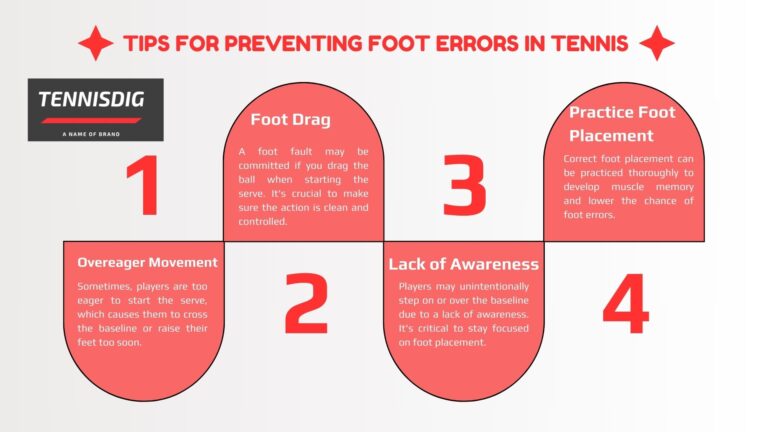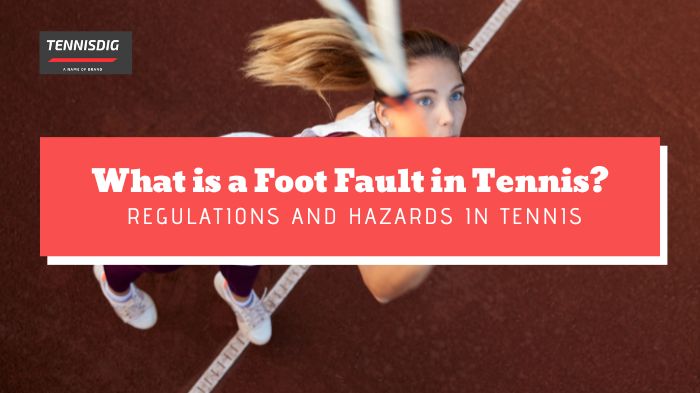Tennis is an exacting and skilled game, with regulations controlling every facet of play. The foot fault stands out as an important but sometimes misinterpreted regulation that greatly affects a game. In this thorough guide, we’ll go over what exactly a foot fault in tennis is, how to avoid them, the regulations governing foot placement at the baseline, and the repercussions of making one. To help unravel the mystery of foot faults, we’ll also explore typical triggers and professional match scenarios and provide answers to commonly asked queries.
Comprehending the Foot Fault Rule:
Position of the Foot at the Base:
In tennis, a foot fault happens when a player’s foot or feet move out of position during the serve. The regulations state that until the ball is struck, both feet must be behind the baseline and in contact with the ground. A foot fault is any departure from this guideline, such as a foot that lifts off the ground too soon or crosses the baseline.
Bridging the Divide and Invasion of the Court:
Players must avoid crossing the centerline during the serve while keeping their proper placement behind the baseline. Entering the opposing team’s territory before the ball is thrown is seen as a court invasion and carries the same consequences as a foot error.
Implications of a Foot Fault:
The ramifications of a foot error can affect how the game plays out. The server forfeits the point in the event of a foot fault. A foot error can affect the course of a professional match, where there is tremendous pressure, and every point counts.
Tips for Preventing Foot Errors in Tennis

Typical Foot Fault Initiators
Overeager Movement:
Sometimes, players are too eager to start the serve, which causes them to cross the baseline or raise their feet too soon.
Foot Drag:
A foot fault may be committed if you drag the ball when starting the serve. It’s crucial to make sure the action is clean and controlled.
Lack of Awareness:
Players may unintentionally step on or over the baseline due to a lack of awareness. It’s critical to stay focused on foot placement.
Tennis Advice for Creating a Reliable Serve Practice Foot Placement:
Correct foot placement can be practiced thoroughly to develop muscle memory and lower the chance of foot errors.
How can I practice serving with perfect foot placement?
Conscious awareness of foot placement is necessary to practice serves without foot mistakes. Practice consistent foot placement with drills, then use video analysis to find and fix any possible technical errors.
Why are foot errors important in tennis?
Foot errors are important since they can cost you a point, changing the course of a game or a match. Every serve matters in elite tennis, where points are hotly disputed.
What occurs when two people disagree on a call for a foot fault?
Professional players can use electronic line-calling devices such as Hawk-Eye to contest calls, especially foot faults. If such technology is unavailable, disagreements may be settled by speaking with the chair umpire.
Do singles and doubles matches have the same foot-fault regulations?
In both singles and doubles matches, the foot fault rules apply. Players are required to follow the regulations regarding foot positioning during serves, regardless of the format.
As you advance to the baseline, remember that having precise footwork is a tactical advantage that can improve your performance and keep you ahead on the scoreboard.
Video Analysis:
By capturing and examining your serve, you can gain insight into any patterns of foot faults and make the required corrections.
Regular Ritual:
Establish a pre-serve regimen with a systematic and regular foot placement technique. By doing this, mistakes made during a match may be reduced.
Foot Error Reports in Professional Games:
Foot faults in professional tennis matches are scrutinized and are not overlooked. The foot fault rule is enforced with vigilance by chair umpires and linespeople. High-stakes matches have had notable foot fault incidents that have sparked controversy, highlighting the need to serve accurately.
Frequently Asked Questions (FAQ) Regarding Tennis Foot Faults:
Is calling a foot fault during a second serve possible?
Calling a foot fault on both the first and second serve is possible. Whether it’s the first or second try, all serves are subject to the foot fault rule.

